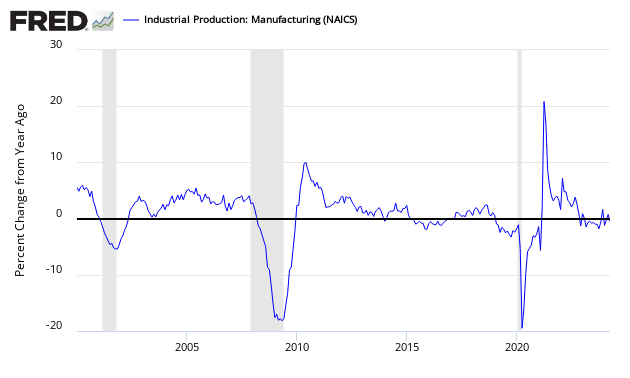May 2017 Philly Fed Manufacturing Survey Declined But Remains Firmly In Expansion
The Philly Fed Business Outlook Survey significantly improved and remains firmly in expansion. Key elements are in expansion.

Analyst Opinion of the Philly Fed Business Outllook Survey
There is continuing significant strength in this survey from new orders. Note that the New York Fed manufacturing survey (released earlier this week) returned to contraction.
This is a very noisy index which readers should be reminded is sentiment based. The Philly Fed historically is one of the more negative of all the Fed manufacturing surveys but has been more positive than the others recently.
The index moved from +22.0 to +38.8. Positive numbers indicate market expansion, negative numbers indicate contraction. The market expected (from Bloomberg/Econoday) 16.0 to 25.0 (consensus +19.6).
Results from the May Manufacturing Business Outlook Survey suggest that regional manufacturing activity continued to expand this month. The diffusion indexes for general activity and shipments improved notably from their April readings. The indexes for new orders and employment, however, fell modestly from last month but remained at high readings. Although most of the survey's future indicators fell this month, the readings suggest that most firms still expect growth to continue over the next six months.
Current Indicators Reflect Continued Growth
The index for current manufacturing activity in the region increased from a reading of 22.0 in April to 38.8 this month. The index has been positive for 10 consecutive months. This month, the index recovered some of the declines of the previous two months, but it still remains slightly below its high reading of 43.3 in February (see Chart 1). Fifty-one percent of the firms indicated increases in activity in May, while 13 percent reported decreases. The current new orders and shipments indexes remained at high readings. The shipments index increased 16 points, while the new orders index declined 2 points. Both the delivery times and unfilled orders indexes were positive for the seventh consecutive month, suggesting longer delivery times and increases in unfilled orders.
z philly fed1.PNG
Econintersect believes the important elements of this survey are new orders and unfilled orders. Both new orders and unfilled orders remain in expansion.
z philly fed2.PNG
This index has many false recession warnings.
Summary of all Federal Reserve Districts Manufacturing:
Richmond Fed (hyperlink to reports):
z richmond_man.PNG
Kansas Fed (hyperlink to reports):
z kansas_man.PNG
Dallas Fed (hyperlink to reports):
z dallas_man.PNG
Philly Fed (hyperlink to reports):
z philly fed1.PNG
New York Fed (hyperlink to reports):
z empire1.PNG
Federal Reserve Industrial Production - Actual Data (hyperlink to report):

Holding this and other survey's Econintersect follows accountable for their predictions, the following graph compares the hard data from Industrial Products manufacturing subindex (dark blue bar) and US Census manufacturing shipments (lighter blue bar) to the Philly Fed survey (yellow bar).

In the above graphic, hard data is the long bars, and surveys are the short bars. The arrows on the left side are the key to growth or contraction.
Caveats on the use of Philly Fed Business Outlook Survey:
This is a survey, a quantification of opinion - not facts and data. Surveys lead hard data by weeks to months, and can provide early insight into changing conditions. Econintersect finds they do not necessarily end up being consistent compared to hard economic data that comes later, and can miss economic turning points.
This survey is very noisy - and recently showed recessionary conditions. And it is understood from 3Q2011 GDP that the economy was expanding even though this index was in contraction territory. On the positive side, it hit the start and finish of the 2007 recession exactly.
No survey is accurate in projecting employment - and the Philly Fed Business Outlook Survey is no exception. Although there are some general correlation in trends, month-to-month movements have not correlated with the BLS Service Sector Employment data.
Over time, there is a general correlation with real business data - but month-to-month conflicts are frequent.
Disclosure: None.










